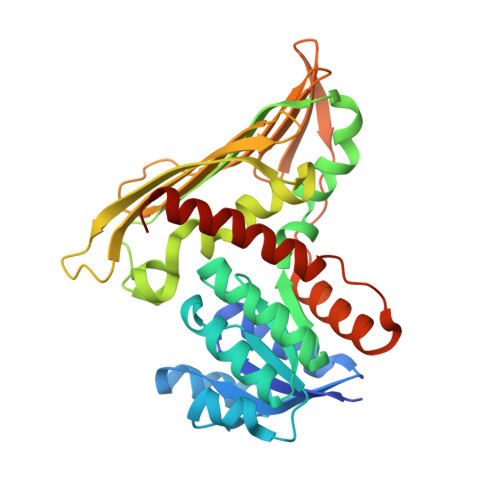A substrate-bound structure of cyanobacterial biliverdin reductase identifies stacked substrates as critical for activity
Takao, H., Hirabayashi, K., Nishigaya, Y., Kouriki, H., Nakaniwa, T., Hagiwara, Y., Harada, J., Sato, H., Yamazaki, T., Sakakibara, Y., Suiko, M., Asada, Y., Takahashi, Y., Yamamoto, K., Fukuyama, K., Sugishima, M., Wada, K.(2017) Nat Commun 8: 14397-14397
- PubMed: 28169272
- DOI: https://doi.org/10.1038/ncomms14397
- Primary Citation of Related Structures:
5B3T, 5B3U, 5B3V - PubMed Abstract:
Biliverdin reductase catalyses the last step in haem degradation and produces the major lipophilic antioxidant bilirubin via reduction of biliverdin, using NAD(P)H as a cofactor. Despite the importance of biliverdin reductase in maintaining the redox balance, the molecular details of the reaction it catalyses remain unknown. Here we present the crystal structure of biliverdin reductase in complex with biliverdin and NADP + . Unexpectedly, two biliverdin molecules, which we designated the proximal and distal biliverdins, bind with stacked geometry in the active site. The nicotinamide ring of the NADP + is located close to the reaction site on the proximal biliverdin, supporting that the hydride directly attacks this position of the proximal biliverdin. The results of mutagenesis studies suggest that a conserved Arg185 is essential for the catalysis. The distal biliverdin probably acts as a conduit to deliver the proton from Arg185 to the proximal biliverdin, thus yielding bilirubin.
Organizational Affiliation:
Organization for Promotion of Tenure Track, University of Miyazaki, Miyazaki 889-1692, Japan.
















